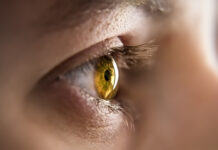
That “night follows day” has been of outstanding certainty to us humans (Hamlet, by William Shakespeare). And indeed, at any place on Earth, it has been entirely predictable when light arrives from the sun and moon. It is thus little wonder that life on Earth has organized itself around the rhythms of light and darkness.
Humans, always keen observers, had precise knowledge of these predictable changes, as evidenced by Standing Stone arrangements or the Mayan Calendar. Some cultures used combinations of day length, the lunar cycle, and the day-night cycle, to harvest prey that was abundant only briefly each year. The Palolo worm, a marine delicacy in the Pacific, is a good example. It only comes up from the Deep Sea on few occasions for mating, and its swarming behavior is synchronized by the lunar cycle at a particular time of year. The islanders know this with precision, and are waiting to catch them on that single moonlit night.
For living organisms, light and dark have many functions. Light carries energy, which is used in photosynthesis, to power all living organisms. Solar energy is also used to give warmth to many animals which may bask in sunshine. But too much of a good thing can harm: Solar radiation can also activate injurious biochemical processes, so that organisms equally seek shelter from light.
Likewise, light also enables sensory functions. Foremost are the visual systems which rely on light to perceive the environment, from obstacles to food and friend to foe. With too little light, visual systems stop functioning, but equally, too much light leads to glare. Other sensory systems may also require light, for example navigation. Animals as different as sea turtles, birds or moths, either move directly to the light or use navigation systems that are sensitive to light, such as the magnetic compass. Again, light and darkness both have important functions: while an animal might easily catch its prey in the light, it might equally become an easy target for someone else’s dinner plan.
Therefore, organisms seek out both light and darkness, depending on their needs. Given these vital functions of light and dark, organisms have built their lives around the predictable rhythms of nature. This includes ways to capture or avoid light’s energy, for example the closing and turning of leaves and flowers. It includes sensory adaptations for visual and other uses of light. And most importantly, it includes biological time-keeping systems that help organisms to align with nature’s daily, lunar and seasonal rhythms to anticipate the coming and going of light. These time-keeping systems are highly specialized to sampling light, often in minute amounts, as a source of information. For example, even milliseconds of light can flip the biological clock of a dark cave-dwelling bat! Darkness, too, matters: Many organisms need the long, dark nights of winter to reactivate reproduction for the upcoming spring.
The key message is that many organisms, including us humans, need clocks, light and darkness, to balance activity and rest for sustaining healthy lives.
Barbara Helm PhD is Professor for Biological Rhythms of Natural Organisms at the University of Groningen and Visiting Professor at the University of Glasgow, and has followed birds from the countryside to the city to study the effect of urbanization and night illumination on their clocks, diet, reproduction and health. She also measures how animals track the changing seasons and how long-distance migratory birds are responding to climate change.





